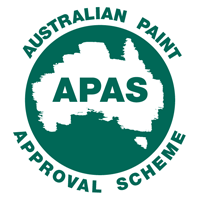Fluoropolymer coatings are not new to industry and have been around for over forty years in the form of PVDF, Polyvinylidene Fluoride. This product can be coil-coated to steel sheeting offering good corrosion protection, but the process requires heat application in excess of 200° C, thus limiting application opportunities. Leading the field in fluoropolymer paint technology since the 1980’s, are topcoats based on FEVE resin, Fluoroethylene vinyl-ether. This technological breakthrough enables application of a fluoropolymer paint topcoat in the field using traditional spray technology. In the past, paint topcoats have largely been viewed as an aesthetic appendix to the paint system, but with the advent of fluoropolymer paint technology, they have now become a major protection asset as well as enhancing the aesthetics all at the same time. In fact, corrosion protection, resistance to high and low temperatures, exceptional durability and chemical resistance render a unique advantage with this cutting-edge technology.
CHEMICAL PROPERTIES OF FLUOROPOLYMERS
FEVE is an alternating co-polymer, meaning that each fluoroethylene molecule is followed in the polymer chain with a vinyl-ether molecule. These molecules can contain many millions of this alternating sequence of the two molecules. The exceptional durability of the FEVE molecular structure is attributable to two fairly simple, but ingenious properties. Public enemy number one of all paint systems is ultra violet light. Although part of the electromagnetic spectrum, it also presents as photon particle energy and can and does sever molecular bonds. Now fluorine is a very powerful oxidising element and in the fluoroethylene molecules has replaced three of the hydrogen atoms normally found in basic ethylene. These fluorine atoms bond to the carbon chain atoms with a bond energy that is greater than any energy UV photons can come up with. The second line of defence is that the larger fluoroethylene molecules protect the smaller vinyl-ether molecules, shrouding them from any invasive UV photons and rendering the whole co-polymeric molecular structure virtually inert to UV degradation.
COMMON INDUSTRIAL APPLICATIONS OF FLUOROPOLYMER COATINGS
- Buildings and Architecture, CFC, Aluminium, Steel, GRC and FRP façade panels and other building elements.
- Structural Steel – FEVE coatings are frequently used as a topcoat in a three-coat system to protect structural steel. This is especially beneficial where difficult access is a financial implication such as bridge maintenance. On-going monitored Japanese case studies since the 1980’s and extensive global accelerated weather testing experiments, all concur that a life cycle of between sixty and even up to one hundred years is feasible. Such prolonged life-cycles reduce life-time costs and significantly contribute to a reduction in CO2 emissions.
- Composites FEVE topcoats are an ideal coating for composite structures. This is a developing market with many new applications in bridges, walkways and sculptures and offers up to one hundred years protection
- Marine Environments: where coatings are exposed to a combination of corrosion initiators and strong UV irradiation – an ideal application for FEVE to improve corrosion and weathering resistance.
- Renewable energy: In this sector, fluoropolymer coatings are used to protect against corrosion, enhance chemical, and UV resistance.
Contact A & I Coatings for professional advice on all fluoropolymer paint applications.





